The Italian greyhound is a delicate, petite dog. They don’t do well in cold temperatures or with rough play. They are lapdogs, but don’t be fooled by their sweet nature; they can be headstrong if they choose to be! Let’s learn more about the Italian greyhound’s progression from puppy to adult.
Italian Greyhound Breed Summary

They are happy as lap dogs, but Italian greyhounds still have the sighthound prey drive.
©violet-blue/ via Getty Images
The Italian greyhound is similar to a greyhound but is miniature in size. As part of the toy group, this breed is the smallest of the sighthounds. They share similar characteristics to other sighthounds like the Whippet. Like their larger namesake, they will chase something they deem prey. They can even reach speeds of 25 miles per hour!
Italian Greyhound Growth and Weight Chart by Age
Growth and weight gain for Italian greyhound puppies vary by age and genetics, just like with other breeds. To get a sense of if your dog is gaining sufficiently, know that small breeds may gain around 0.5 ounces per week after six weeks of age until grown. Keep in mind this is just an approximate average, and individual dogs vary.
| Age | Weight |
| Under 2 months | 1/2 pound |
| 2 months | 2 pounds |
| 4 months | 4 pounds |
| 6 months | 6 pounds |
| 8 months | 7 to 8 pounds |
When Will My Italian Greyhound Stop Growing?
Breeds in the toy group mature faster than larger dogs. On average, a toy or small breed may stop growing in half the time a large breed dog does. Typically, this could be anywhere from six to eight months of age.
Consult your veterinarian about how much puppy food your Italian greyhound should receive daily. This is because the amount can vary by the individual dog. Generally, toy-breed puppies need to eat four times a day during their first three months, then three times until they reach around seven to nine months when it can switch to two times per day. Water should always be available throughout the day.
During the first year of their lives, puppies should visit the veterinarian regularly to ensure they are growing at a healthy rate. At least once a month is important during your puppy’s first year of life, also to ensure the dog has received all necessary vaccines.
How Big Will My Italian Greyhound Be When It’s Fully Grown?
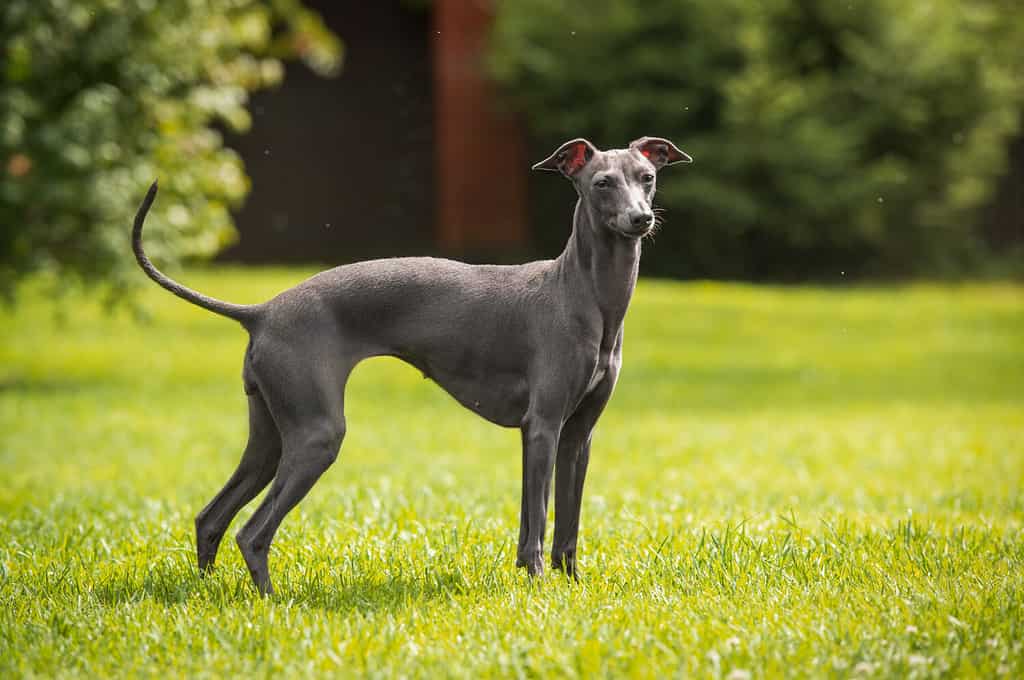
The toy-size Italian greyhound may weigh under 10 pounds.
©Alexandra Morrison Photo/Shutterstock.com
Adult Italian greyhounds are usually between 13 to 15 inches tall at the whithers and weigh a slight seven to 14 pounds. They can be as long as 19 inches, but their size can vary based on genetics and how much and what they are fed.
When Should My Italian Greyhound Be Spayed or Neutered?
Generally, small dogs in the toy category can undergo spay or neute earlier than larger dogs since they mature faster and reach their full growth earlier. Since Italian greyhounds typically reach their full size around eight months of age, it is appropriate to consider neutering and spaying at this time. Your veterinarian can work with you to recommend the best timing for your dog.
There are many health benefits for your Italian greyhound if you choose to spay or neuter them. For females, spaying reduces your dog’s chance of developing breast cancer. It also cuts out the risk of uterine and ovarian cancer and uterine infection. Your dog will no longer have the desire to breed. In addition, you won’t have to worry about contributing to the overpopulation of animals when shelters are are already full.
For males, neutering can help prevent prostate issues. It eliminates the risk of testicular cancer. Additionally, neutered dogs typically mark less and have less desire to roam. You may have heard that neutering can lower aggressive tendencies. On the flip side, neutered dogs are rumored to be heavier than non-neutered dogs. There is no solid proof that either is a given. Keeping your dog on a healthy diet and ensuring they are properly trained is what matters in these cases.
When Should My Italian Greyhound Be Housebroken?
Italian greyhounds have a bad reputation for being difficult to housetrain. This may be because the breed is sensitive to cold, wet, weather. When conditions aren’t ideal, it might be harder to get them outside to go to the bathroom than other breeds.
Ideally, you should start to potty train your Italian greyhound as soon as they come home. Toy breed puppies generally need to be on a schedule where they go outside to the bathroom every hour. Eventually, as a small dog gets older, they will need to go out every two to four hours.
Training an Italian greyhound requires patience and consistency. You’ll want to establish a routine so your pup begins to understand where and when they are supposed to go to the bathroom. Take them out when they wake up, after they eat, and after they’ve had a play session.
When Should My Italian Greyhound Stop Eating Puppy Food?
Switching to adult food from puppy food too early can affect your Italian greyhound’s growth and development. They need the extra nutrients in puppy food. However, feeding a puppy formula for too long can lead to weight gain. Generally, as soon as your Italian greyhound is fully mature, around eight months or so, they can switch to adult food. Just be sure to confirm with your veterinarian.
When Will My Italian Greyhound Start Losing Teeth?
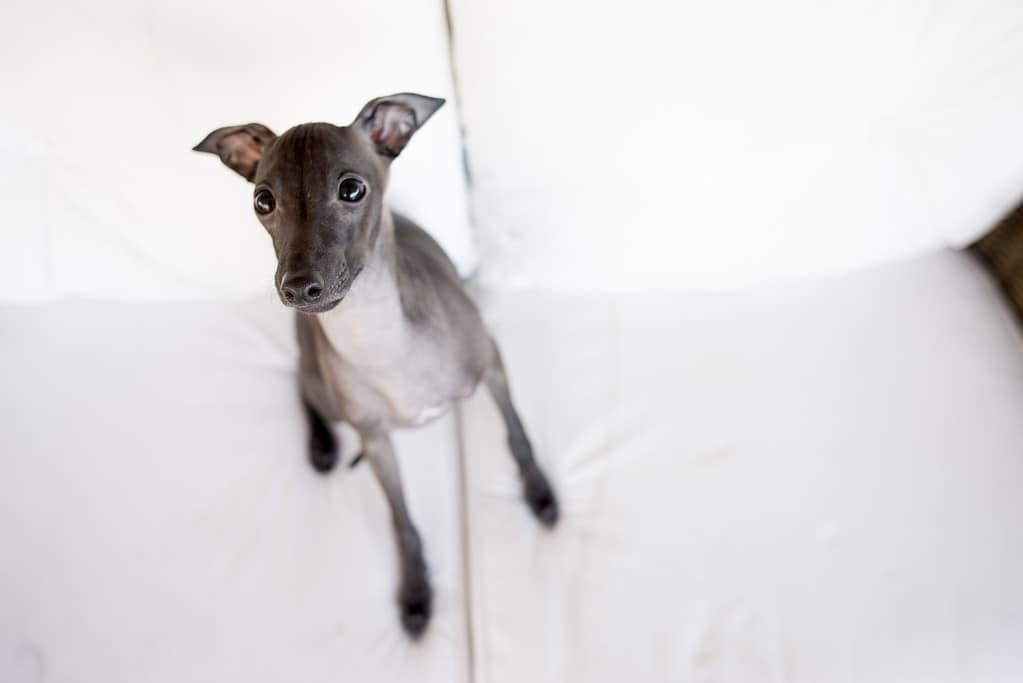
Italian greyhound puppies lose their teeth around the same time as other puppies do.
©claudiio Doenitz/ via Getty Images
Puppies of all sizes, whether large breed or the toy-size Italian greyhound, lose teeth around the same time. They will start to lose teeth around three months of age as their permanent teeth begin to erupt. All adult teeth should be in sometime around six months of age.
Frozen chew toys are a great way to redirect teething puppies from gnawing on things that they shouldn’t, such as your furniture or shoes. Try freezing carrot sticks or some fruits for a healthy, soothing treat.
When Should I Start Training My Italian Greyhound?
Socializing from a young age is extra important as the breed can be quite timid if not used to various environments, animals, and people. Since they’re also sensitive, positive reinforcement training, where the dog is rewarded for correct behavior, works well.
What Cues Should I Teach My Italian Greyhound First?
Because Italian greyhounds are sighthounds, they are prone to taking off on the chase at top speed. That’s why teaching impulse control through various commands is extra important for the breed.
Sit: Teaching sit is a great first command. This cue can help curb unwanted jumping. Beyond that, sit is a helpful command to teach dogs that they will receive something good, aka a treat or other reward, for their behavior.
Stay: This command is the next step in learning impulse control. It’s important for safety, as getting your dog to stay in one spot when necessary can avert all kinds of issues. Teach this in stages of duration, building up to longer amounts of time. Start by keeping your dog in a sit and eventually move to getting the dog to stand or lay down.
Come: Like learning to stay, learning to come is a good safety measure for dogs. Italian greyhounds in particular can be hard to get to come back once they are on the chase, so have patience while teaching this particular command. Treats and praise will help.
When Will My Italian Greyhound Calm Down?
Though Italian greyhounds are happy snuggling in your lap, the breed will continue to have puppy energy past the first year of their life. Most dogs, including Italian greyhounds, will start to calm down when they are firmly in the adult phase of their lives, around two to three years old.
Until Italian greyhounds get to this age, consistent training, socialization, and exercise will make the breed more manageable.
Common Health Issues Your Italian Greyhound Might Experience
Italian greyhounds generally can live a healthy life of between 13 to 15 years, or even longer in some cases. But they are prone to some conditions worth keeping an eye on. Poorly bred dogs, in particular, may be more susceptible. Common health issues with Italian greyhounds include autoimmune disease, epilepsy, dental problems, and Legg-Calve-Perthes disease, where the ball part of the hip’s ball and socket joint degrades over time.
Pictures of Italian Greyhounds as Puppies
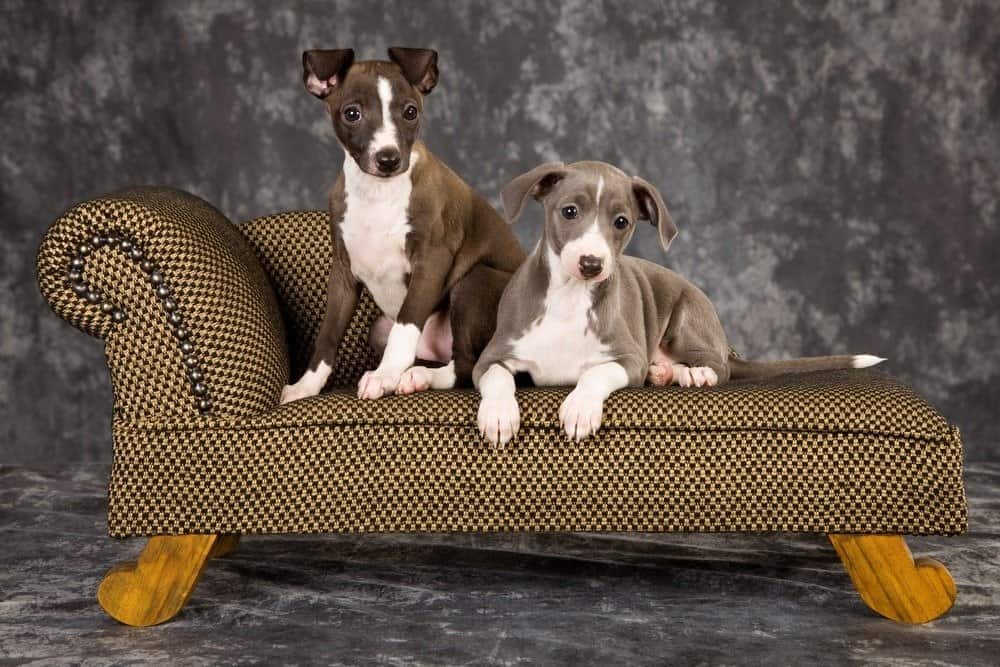
Italian greyhounds grow fast.
©Linn Currie/Shutterstock.com
Picture of Italian Greyhound at 6 Months
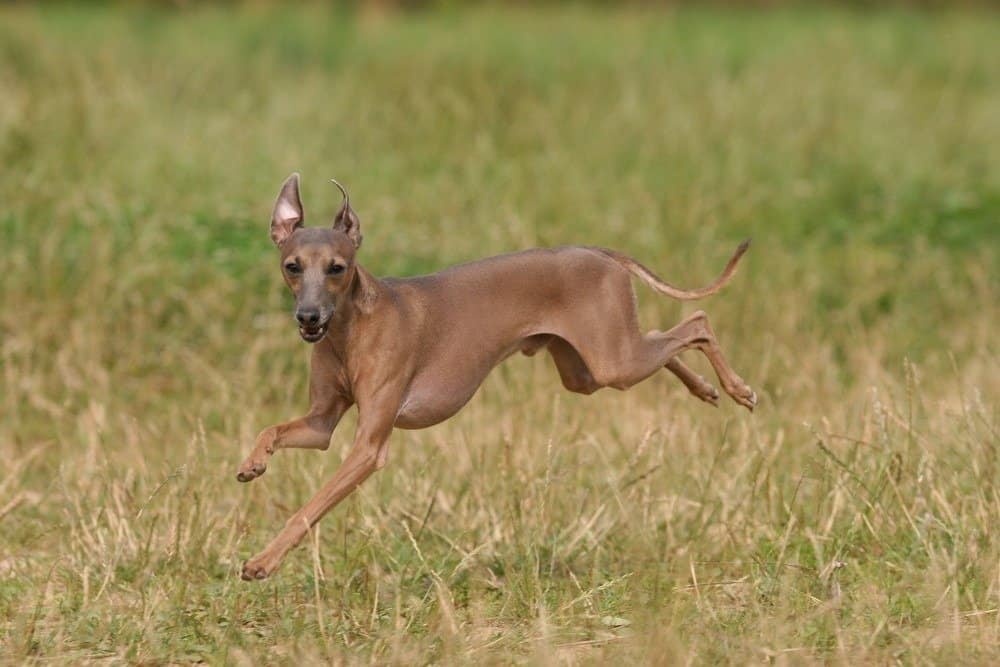
Italian greyhounds are just about fully grown at 6 months of age.
©Utekhina Anna/Shutterstock.com
Picture of Fully Grown Italian Greyhounds
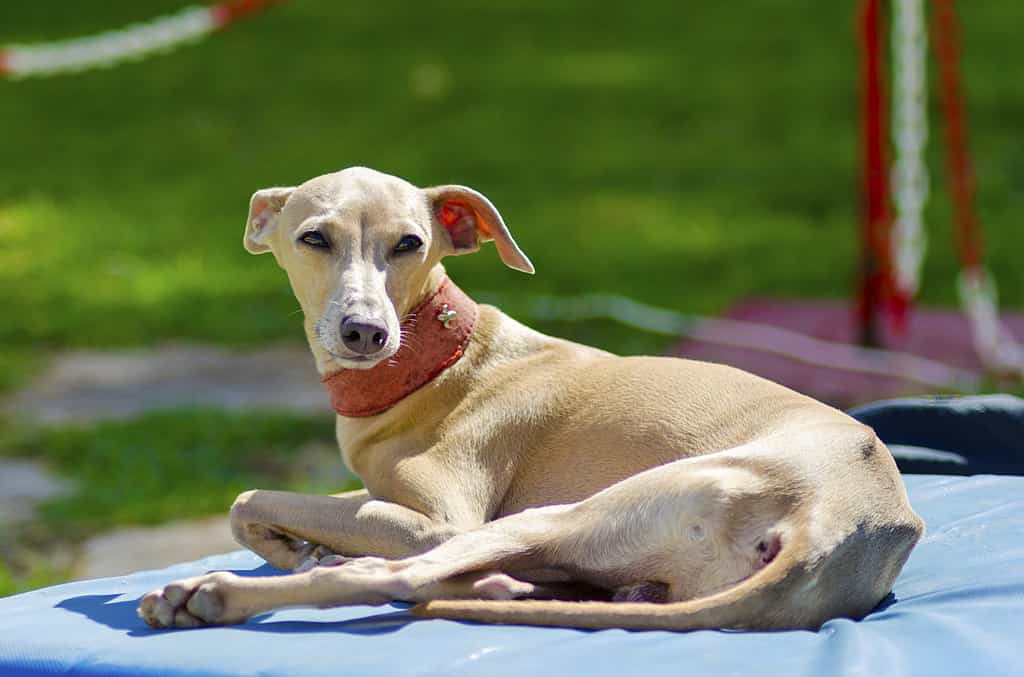
Italian greyhounds come in shades of grey, fawn, or black.
©f8grapher/ via Getty Images
The photo featured at the top of this post is © Dienes Vivien/ via Getty Images
Ready to discover the top 10 cutest dog breeds in the entire world?
How about the fastest dogs, the largest dogs and those that are -- quite frankly -- just the kindest dogs on the planet? Each day, AZ Animals sends out lists just like this to our thousands of email subscribers. And the best part? It's FREE. Join today by entering your email below.
Thank you for reading! Have some feedback for us? Contact the AZ Animals editorial team.







